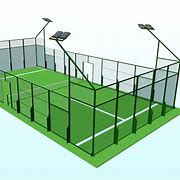

The Essential Guide to Paddle Tennis Racquets
Paddle tennis, a unique racquet sport that has gained popularity in recent years, combines elements of traditional tennis and platform tennis. It’s played on a smaller court, typically surrounded by walls, and is designed to be fast-paced and engaging. A key factor that influences players' performance in this sport is the choice of paddle tennis racquet. This article provides an overview of paddle tennis racquets, discussing their features, materials, and recommendations for both beginners and experienced players.
Understanding Paddle Tennis Racquets
Paddle tennis racquets are distinct from traditional tennis racquets in several ways. They are usually solid, made from composite materials, and lack strings. Instead of being strung, the hitting surface is solid and often perforated with holes, which helps to reduce air resistance and optimize control. The absence of strings allows players to strike the ball with more consistency, leading to a style of play that emphasizes strategy and placement.
Key Features of Paddle Tennis Racquets
When selecting a paddle tennis racquet, players should consider the following key features
1. Material Most paddle tennis racquets are made from graphite, fiberglass, or a combination of both. Graphite models are known for their lightweight properties and are often favored by advanced players seeking maximum power and control. Fiberglass racquets, on the other hand, are generally more durable and may be better suited for beginners, offering good performance at a more affordable price.
2. Weight The weight of the racquet can significantly affect a player’s game. Lighter racquets (around 300 grams) are easier to maneuver and are ideal for quick reactions and fast-paced play. Heavier racquets provide more power and stability but may require more strength and endurance to handle effectively. Beginners should typically opt for lighter options until they develop their technique and strength.

3. Grip Size The grip size is another important factor; it should be comfortable and allow you to maintain control of the racquet during play. A grip that is too small can lead to slipping, while one that is too large can cause tension in the hand and wrist. Players should always try different grip sizes to find the best fit.
4. Shape and Design Paddle tennis racquets come in various shapes, including round, teardrop, and diamond. Round racquets typically provide a larger sweet spot, making them suitable for beginners. Teardrop-shaped models offer a balance of power and control, while diamond-shaped racquets tend to favor advanced players seeking maximum power.
Recommendations for Players
For beginners, we recommend starting with a racquet that is lightweight and has a larger head for better forgiveness on off-center hits. A fiberglass racquet with a comfortable grip will facilitate learning and help in developing skills.
As players progress, they may want to experiment with different materials and weights to find what suits their style of play. Advanced players may favor graphite racquets with specific shapes designed to enhance their competitive edge.
Conclusion
Choosing the right paddle tennis racquet can greatly influence your performance and enjoyment of the game. By considering factors such as material, weight, grip size, and shape, players can find a racquet that complements their style and skill level. Whether you are just starting or are a seasoned player, the right paddle tennis racquet can make a significant difference in your game. Embrace the challenge, and enjoy the fast-paced excitement that paddle tennis has to offer!
Industrial Flooring Solutions for Factories & Racquetball Courts Safe & Durable
Premium Rubber Floor Mats Slip-Resistant, Durable & Easy Clean
Industrial Flooring Solutions for Outdoor Paddle Tennis Courts & Factories
Industrial Flooring Solutions Durable Padel Court Supplier & Installation
Rubber Composite Flooring Durable, Slip-Resistant Floor Mats
Premium PVC & Rubber Sports Flooring Shock Absorption, Slip Resistance